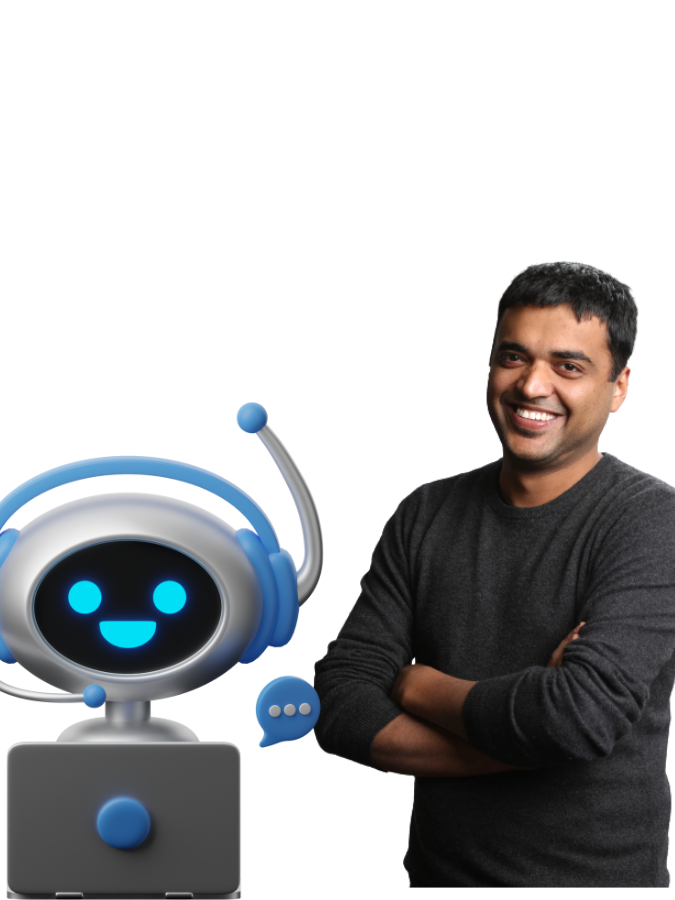It started with a simple Monday morning routine: coffee in hand, inbox open. But what greeted her wasn’t just the usual flow of customer questions—it was an avalanche.
Overnight, dozens of support requests had piled up. Some were minor (“Where’s my order?”), others emotional (“I trusted your product and it broke in two days”), and a few were downright furious. The small support team was already stretched thin. And the founder? She had to choose—wait for her team to catch up, or find a faster fix.
This was the moment many founders face but rarely talk about out loud. When the scale tips from manageable to chaotic, the first instinct is often the same: automate.
But what happens next—how they try, fail, and eventually find a balance—shapes not just the company’s CX strategy, but the trust customers hold in their brand.
The chatbot temptation
She didn’t need convincing. After a week of overflowing tickets and tired team members, the pitch was easy to buy into: “Set up a chatbot. Let it handle the basics. Give your team room to breathe.”
At first, it felt like magic. The bot replied instantly. It never needed a break. Customers got answers to simple questions without waiting in line. The team finally had time to focus on trickier cases—and maybe even finish lunch.
For a while, it worked.
But then the cracks showed.
A customer asked for help with a damaged order. The bot responded with tracking info. Another asked a two-part question. The bot picked the first part and ignored the rest. Some replies were technically accurate—but emotionally off. Cold. Robotic. Completely missing the mark.
Instead of solving problems, the bot started creating new ones.
It became clear: speed without understanding isn’t a fix—it’s a shortcut. And customers can feel the difference.
Humans still matter—sometimes even more
Customers started pushing back.
Not with technical complaints—but with frustration that felt personal. “I’m talking to a wall.” “Can someone please read what I actually said?” The message was loud and clear: they didn’t want perfection. They wanted to feel heard.
That’s where real people came back into the picture.
One founder shared how a single heartfelt reply from a team member turned a potential one-star review into a loyal customer story. Another realized that human agents weren’t just solving problems—they were calming nerves, cracking jokes, apologizing in a way that felt sincere.
The bots could answer. But the humans could connect.
And when the issue was delicate—like a billing mistake or a product complaint—connection mattered more than speed.
So they did both—and it worked
Founders didn’t scrap their bots. They just stopped expecting them to do everything.
Instead, they redesigned the flow. The bot would greet, handle the basics, and hand things off the moment a question felt too layered or emotional. It wasn’t about automation or empathy. It was about knowing when to switch gears.
One founder of a growing skincare brand shared how their chatbot now takes care of order lookups and FAQ-level queries. But if a customer mentions “refund,” “broken,” or “angry,” the bot flags a human instantly. No delays. No hoops to jump through.
That single change cut response time in half—without sacrificing warmth. And the support team? They stopped feeling like firefighters and started feeling like problem solvers again.
Customers noticed.
Building a system that feels human (even when it isn’t)

Some founders didn’t stop at handoffs. They wanted their chatbots to feel… less like chatbots.
So they started tweaking the voice. Shorter sentences. Casual phrasing. A little warmth. One founder even added a pause before the bot replied, just to mimic how a person might think before typing.
Another gave the bot a name—but not one that screamed “robot.” Just something simple, like “Sam” or “Jess.” It wasn’t about tricking the customer. It was about softening the interaction.
One eCommerce team added a subtle message at the end of each response: “Want to keep chatting with me, or would you prefer a real person?” Most people appreciated the choice.
Turns out, it’s not the tech that frustrates people. It’s the feeling of being trapped in a loop. Giving them a way out made all the difference.
What founders wish they knew earlier
A lot of early mistakes had nothing to do with the tech—and everything to do with expectations.
Some founders expected their chatbot to “handle it all” right out of the box. Others picked tools that were too rigid or too smart for their own good. One founder laughed while recalling how their bot confidently gave out return instructions… for a product the company hadn’t sold in months.
What finally clicked wasn’t some fancy upgrade. It was listening. To customers. To support agents. To all the moments where things got stuck.
One brand found success after rewriting every automated message to match how their team actually spoke. Another started treating the chatbot like a junior intern—helpful, but never left unsupervised.
The truth? Most customers don’t expect perfection. But they do expect effort. And when a company shows they’re paying attention, even a chatbot gets a second chance.
Where this is going next
Founders aren’t choosing sides anymore. They’re building systems where chatbots do the heavy lifting, so humans can show up stronger when it counts.
That means designing better handoffs, not just faster replies. It means mapping the customer journey, spotting the emotional moments, and making sure a real person is ready when it matters most.
Some startups are even rethinking the role of their support teams. Not as backup for bots—but as experts who step in when the stakes are higher. The goal isn’t to scale away from people. It’s to give them more room to be good at what they’re actually good at.
In that model, automation isn’t a threat. It’s a teammate.
Where this is going next
Founders aren’t thinking in extremes anymore. Nobody’s trying to replace every human—or ditch automation entirely. The smarter ones are designing systems that know when to speed things up, and when to slow things down.
One founder described it like this: the bot opens the door, but the human decides what happens next. It’s not about removing people from the process. It’s about giving them room to show up where it matters most.
Some teams now use chatbots to gather context before a human joins. Others let bots handle routine follow-ups so agents can focus on complex conversations. The goal isn’t to save money. It’s to protect the quality of experience.
And the real shift? CX teams are finally seen as relationship builders—not just support staff.
Final takeaway
The question was never chatbots or real humans?
Founders who figured it out stopped asking that a long time ago. What they learned is simple: customers don’t care who responds—as long as they feel heard, helped, and respected.
Sometimes, that’s a bot giving a quick update. Other times, it’s a real person stepping in with care.
The best CX isn’t built on choosing sides. It’s built on knowing when to switch hands.
And the companies who get that right? They don’t just move faster. They build trust that lasts.




